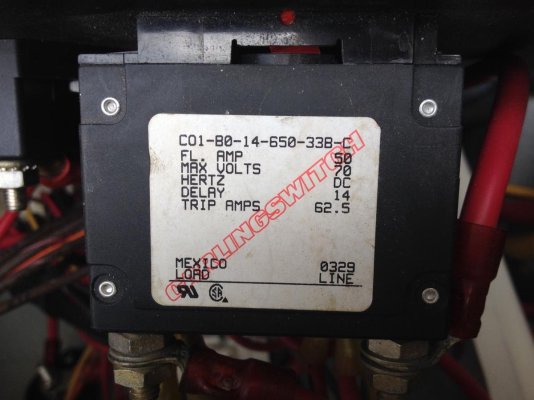kwmeyer13
Senior Member
- Joined
- Oct 30, 2014
- Messages
- 260
- Location
- USA
- Vessel Name
- Guns 'N' Hoses II
- Vessel Make
- 2004 34' Pilothouse Sedan
I am adding an additional circuit off the main battery panel in the aft sect of the bilge on my 2004 34' Pilot Sedan. Just thought I would pass along the info on the panel breakers. They are made by Carling Switch......here is the picture.
For those on yahoo its
Part# CO1-B0-14-650-33B-C
F.L. Amp 50
Max Volts 70
Hertz D.C.
Delay 14
Trip Amps 62.5
I was able to order it from Flounder Pounder Marine OEM Surplus obsolete boat parts for 39.90
For those on yahoo its
Part# CO1-B0-14-650-33B-C
F.L. Amp 50
Max Volts 70
Hertz D.C.
Delay 14
Trip Amps 62.5
I was able to order it from Flounder Pounder Marine OEM Surplus obsolete boat parts for 39.90

